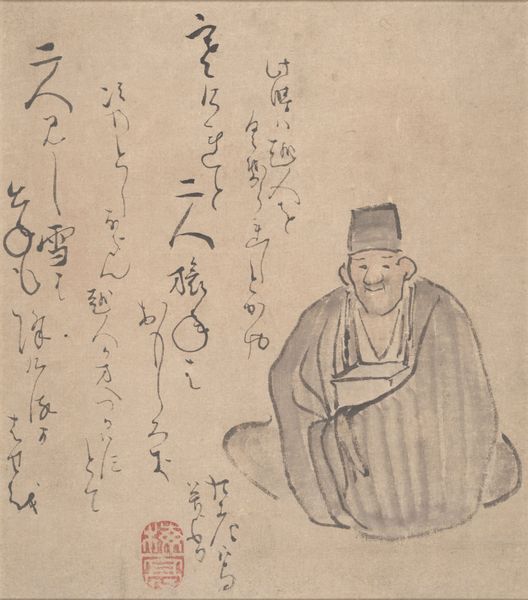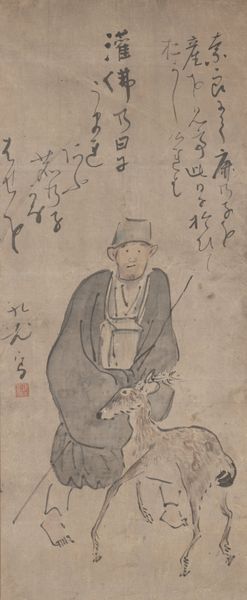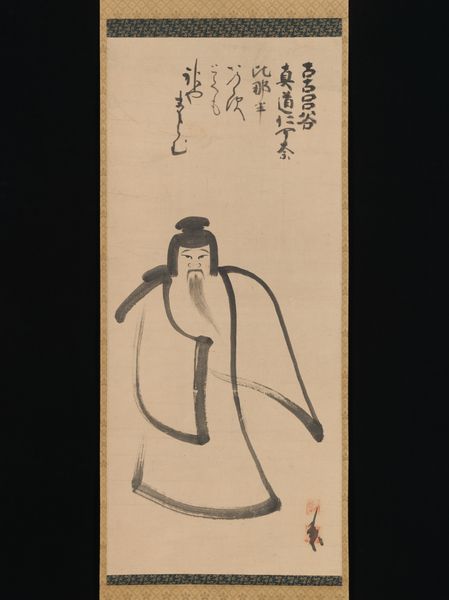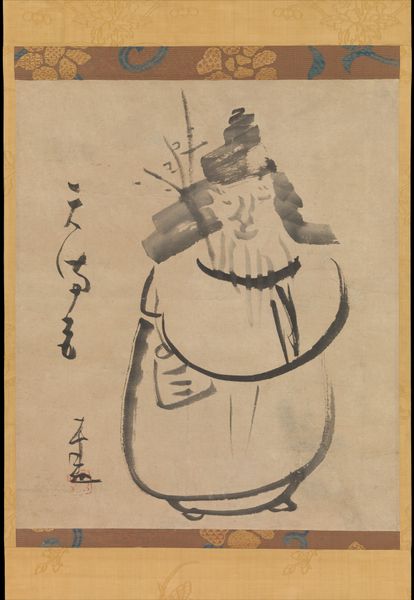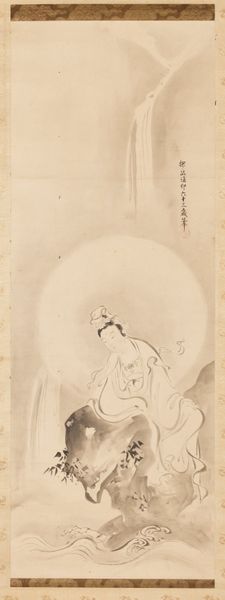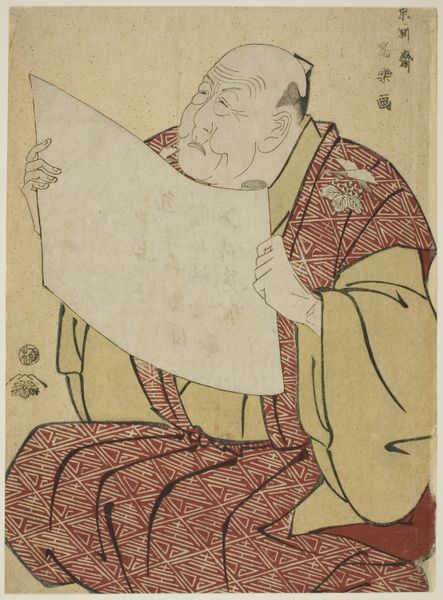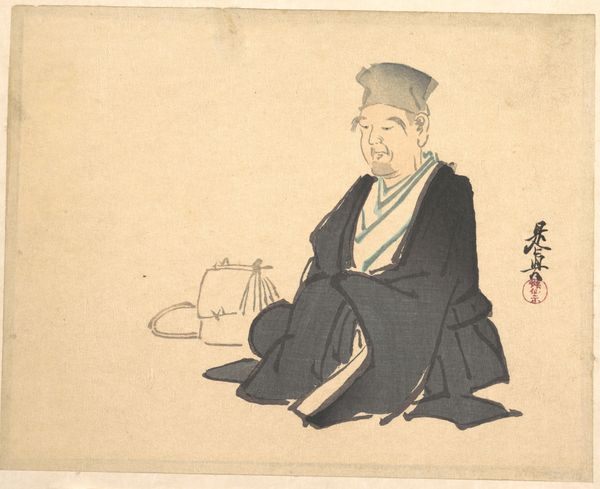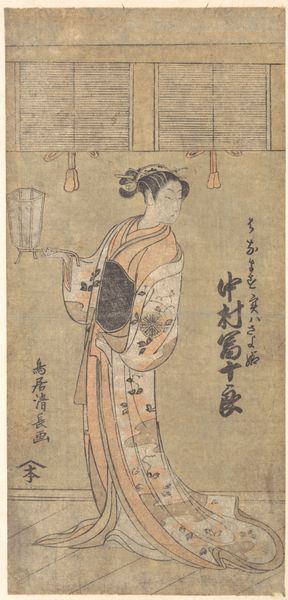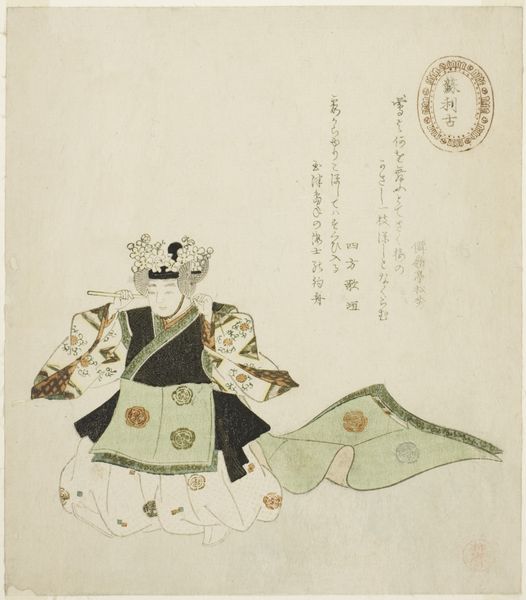
drawing, ink, color-on-paper
#
portrait
#
drawing
#
imaginative character sketch
#
toned paper
#
light pencil work
#
asian-art
#
ukiyo-e
#
japan
#
personal sketchbook
#
ink
#
color-on-paper
#
ink drawing experimentation
#
pen-ink sketch
#
sketchbook drawing
#
watercolour illustration
#
storyboard and sketchbook work
#
sketchbook art
Dimensions: 9 15/16 × 6 13/16 in. (25.24 × 17.3 cm) (image, visible)15 1/8 × 13 1/8 × 1 in. (38.42 × 33.34 × 2.54 cm) (outer frame)
Copyright: Public Domain
Curator: This intriguing ink and color on paper work, titled "Haiku Poet Shohaku", comes to us from the early 19th century and is attributed to Yokoi Kinkoku. I am struck by the confident lines; the figure seems almost buoyant. Editor: It certainly has an immediate levity. The composition, with the figure centrally located and surrounded by text, creates an interesting visual rhythm, and I’m fascinated by the artist’s choice to portray the poet in what seems to be an informal and intimate manner. Curator: Consider the materials, though: ink, light pencil work and watercolor on toned paper. It suggests an accessibility of production; materials available to the scholar or wandering artist. There's an intimacy conveyed not just in the informality you mention, but in the very making of the work. This wasn't an academic oil on canvas; this was a more spontaneous, personal engagement with the subject. Editor: Agreed. And yet, notice how Kinkoku employs traditional brushwork to define the figure's robe and facial features. The varying ink tones create depth and volume. The red seal, in the lower right, also anchors the composition. The use of negative space draws your attention to Shohaku’s expression – one of serene contemplation, perhaps. Curator: Exactly. Think about the social context. Haiku, even then, represented a blending of high and low culture. The sketch isn't reverential; there's a distinct lack of grandiosity. We glimpse Shohaku perhaps as Kinkoku encountered him – an artisan among artisans. It invites us to reflect on what art truly values and memorializes. Editor: I appreciate that insight. Looking at it formally, the use of the calligraphic text becomes an intrinsic design element rather than simply descriptive annotation, interacting with the visual portrayal, to create this sort of cohesive semiotic dialogue. The character itself seems almost to emanate from the inscription; together text and image articulate character. Curator: Precisely. In examining the material simplicity, in recognising the conditions in which this piece was probably created and received, we perhaps value differently what Shohaku’s haiku once meant. It's no longer a 'precious object' alone; but a historical document rooted in collaborative cultural labor. Editor: So true. It reframes our reading experience, shifting from aesthetic appreciation to informed engagement. Curator: Indeed. This is more than just a portrait; it is an invitation to reflect on the production of culture and its potential democratization. Editor: Well said, a fitting synthesis of form, expression and making of art.
Comments
No comments
Be the first to comment and join the conversation on the ultimate creative platform.
